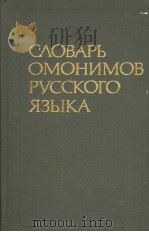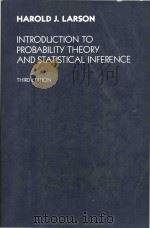《Introduction to statistical quality control Third Edition》
| 作者 | Douglas C. Montgomery 编者 |
|---|---|
| 出版 | Wiley |
| 参考页数 | 723 |
| 出版时间 | 1996(求助前请核对) 目录预览 |
| ISBN号 | 7115156112 — 求助条款 |
| PDF编号 | 813859508(仅供预览,未存储实际文件) |
| 求助格式 | 扫描PDF(若分多册发行,每次仅能受理1册) |
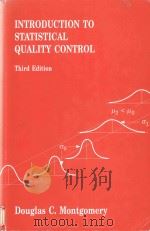
CHAPTER 1QUALITY IMPROVEMENT IN THE MODERN BUSINESS ENVIRONMENT1
1-1The Meaning of Quality and Quality Improvement2
1-1.1 Dimensions of Quality2
1-1.2 Quality Engineering Terminology6
1-2 A Brief History of Quality Methodology8
1-3 Statistical Methods for Quality Improvement12
1-4Total Quality Management17
1-4.1 Quality Philosophy17
1-4.2 The Link Between Quality and Productivity21
1-4.3 Quality Costs22
1-4.4 Legal Aspects of Quality28
1-4.5 Implementing Quality Improvement30
PART ⅠSTATISTICAL METHODS USEFUL IN QUALITY IMPROVEMENT33
CHAPTER 2MODELING PROCESS QUALITY34
2-1Describing Variation35
2-1.1 The Stem and Leaf Plot35
2-1.2 The Frequency Distribution and Histogram38
2-1.3 Numerical Summary of Data40
2-1.4 The Box Plot43
2-1.5 Sample Computer Output44
2-1.6 Probability Distributions46
2-2Important Discrete Distributions51
2-2.1 The Hypergeometric Distribution51
2-2.2 The Binomial Distribution52
2-2.3 The Poisson Distribution55
2-2.4 The Pascal and Related Distributions56
2-3Important Continuous Distributions57
2-3.1 The Normal Distribution57
2-3.2 The Exponential Distribution62
2-3.3 The Gamma Distribution65
2-3.4 The Weibull Distribution67
2-4Some Useful Approximations69
2-4.1 The Binomial Approximation to the Hypergeometric69
2-4.2 The Poisson Approximation to the Binomial69
2-4.3 The Normal Approximation to the Binomial70
2-4.4 Comments on Approximations70
2-5 Exercises71
CHAPTER 3INFERENCES ABOUT PROCESS QUALITY77
3-1Statistics and Sampling Distributions78
3-1.1 Sampling from a Normal Distribution79
3-1.2 Sampling from a Bernoulli Distribution83
3-1.3 Sampling from a Poisson Distribution84
3-2Estimation of Process Parameters85
3-2.1 Point Estimation85
3-2.2 Interval Estimation86
3-3Hypothesis Testing on Process Parameters96
3-3.1 Tests on Means, Variance Known97
3-3.2 The Use of P-Values in Hypothesis Testing100
3-3.3 Tests on Means of Normal Distributions, Variance Unknown101
3-3.4 Tests on Variances of Normal Distributions107
3-3.5 Tests on Binomial Parameters109
3-3.6 Tests on Poisson Parameters110
3-3.7 Probability Plotting113
3-3.8 The Probability of Type Ⅱ Error116
3-4 Exercises119
PART ⅡSTATISTICAL PROCESS CONTROL127
CHAPTER 4METHODS AND PHILOSOPHY OF STATISTICAL PROCESS CONTROL129
4-1 Introduction130
4-2 Chance and Assignable Causes of Quality Variation130
4-3Statistical Basis of the Control Chart132
4-3.1 Basic Principles132
4-3.2 Choice of Control Limits138
4-3.3 Sample Size and Sampling Frequency140
4-3.4 Rational Subgroups143
4-3.5 Analysis of Patterns on Control Charts146
4-3.6 Discussion of Sensitizing Rules for Control Charts149
4-4 The Rest of the “Magnificent Seven”150
4-5 Implementing SPC158
4-6 An Application of SPC159
4-7 Nonmanufacturing Applications of Statistical Process Control167
4-8 Exercises174
CHAPTER 5CONTROL CHARTS FOR VARIABLES179
5-1 Introduction180
5-2Control Charts for x and R181
5-2.1 Statistical Basis of the Charts181
5-2.2 Development and Use of x and R Charts186
5-2.3 Charts Based onStandard Values201
5-2.4 Interpretation of x and R Charts202
5-2.5 The Effect of Nonnormality on x and R Charts205
5-2.6 The Operating-Characteristic Function206
5-2.7 The Average Run Length for the x Chart209
5-3 Control Charts for x and S211
5-3.1Construction and Operation of x and S Charts212
5-3.2 The x and S Control Charts with Variable Sample Size217
5-3.3 The S2 Control Chart221
5-4 Control Charts for Individual Measurements221
5-5 Summary of Procedures for x, R, and S Charts229
5-6 Applications of Variables Control Charts230
5-7 Exercises235
CHAPTER 6CONTROL CHARTS FOR ATTRIBUTES250
6-1 Introduction251
6-2The Control Chart for Fraction Nonconforming251
6-2.1 Development and Operation of the Control Chart253
6-2.2 Variable Sample Size265
6-2.3 Nonmanufacturing Applications270
6-2.4 The Operating-Characteristic Function and Average Run Length Calculations271
6-3 Control Charts for Nonconformities (Defects)275
6-3.1Procedures with Constant Sample Size275
6-3.2 Procedures with Variable Sample Size285
6-3.3 Demerit Systems287
6-3.4 The Operating-Characteristic Function289
6-3.5 Dealing with Low Defect Levels290
6-3.6 Nonmanufacturing Applications294
6-4 Choice Between Attributes and Variables Control Charts294
6-5 Guidelines for Implementing Control Charts299
6-6 Exercises304
CHAPTER 7CUMULATIVE SUM AND EXPONENTIALLY WEIGHTED MOVING AVERAGE CONTROL CHARTS313
7-1The Cumulative-Sum Control Chart314
7-1.1 Basic Principles: The Cusum Control Chart for Monitoring the Process Mean314
7-1.2 The Tabular or Algorithmic Cusum for Monitoring the Process Mean317
7-1.3 Recommendations for Cusum Design322
7-1.4 The Standardized Cusum324
7-1.5 Rational Subgroups325
7-1.6 Improving Cusum Responsiveness for Large Shifts325
7-1.7 The Fast Initial Response or Headstart Feature325
7-1.8 One-Sided Cusums327
7-1.9 A Cusum for Monitoring Process Variability328
7-1.10 Cusums for Other Sample Statistics329
7-1.11 The V-Mask Procedure329
7-2The Exponentially Weighted Moving-Average Control Chart332
7-2.1 The Exponentially Weighted Moving-Average Control Chart for Monitoring the Process Mean333
7-2.2 Design of an EWMA Control Chart337
7-2.3 Rational Subgroups339
7-2.4 Extensions of the EWMA339
7-3 The Moving Average Control Chart341
7-4 Exercises344
CHAPTER 8OTHER STATISTICAL PROCESS CONTROL TECHNIQUES348
8-1Statistical Process Control for Short Production Runs349
8-1.1 x and R Charts for Short Production Runs349
8-1.2 Attribute Control Charts for Short Production Runs352
8-1.3 Other Methods353
8-2Modified and Acceptance Control Charts354
8-2.1 Modified Control Limits for the x Chart354
8-2.2 Acceptance Control Charts357
8-3 Group Control Charts for Multiple-Stream Processes358
8-4Multivariate Quality Control360
8-4.1 Monitoring of Means362
8-4.2 Monitoring Process Variability372
8-5 SPC with Correlated Data374
8-6Interfacing Statistical Process Control and Engineering Process Control386
8-6.1 Process Monitoring and Process Regulation386
8-6.2 Combining SPC and EPC395
8-7Economic Design of Control Charts399
8-7.1 Designing a Control Chart399
8-7.2 Process Characteristics399
8-7.3 Cost Parameters400
8-7.4 Early Work and Semi-Economic Design402
8-7.5 An Economic Model of the x Control Chart403
8-7.6 Other Work412
8-8Overview of Other Procedures413
8-8.1 Tool Wear413
8-8.2 Control Charts Based on Other Sample Statistics414
8-8.3 Adaptive Schemes415
8-8.4 Selecting the Optimum Target Value for a Process417
8-8.5 Fill Control419
8-8.6 Precontrol419
8-9 Exercises421
CHAPTER 9PROCESS CAPABILITY ANALYSIS430
9-1 Introduction431
9-2Process-Capability Analysis Using a Histogram or a Probability Plot433
9-2.1 Using the Histogram433
9-2.2 Probability Plotting434
9-3Process Capability Ratios438
9-3.1 Use and Interpretation of PCR438
9-3.2 Process-Capability Ratio for an Off-Center Process442
9-3.3 Normality and the Process Capability Ratio444
9-3.4 More About Process Centering444
9-3.5 Confidence Intervals and Tests on Process Capability Ratios447
9-4 Process-Capability Analysis Using a Control Chart451
9-5 Process-Capability Analysis Using Designed Experiments453
9-6 Gage and Measurement System Capability Studies455
9-7Setting Specification Limits on Discrete Components461
9-7.1 Linear Combinations461
9-7.2 Nonlinear Combinations465
9-8Estimating the Natural Tolerance Limits of a Process467
9-8.1 Tolerance Limits Based on the Normal Distribution468
9-8.2 Nonparametric Tolerance Limits469
9-9 Exercises470
PART ⅢPROCESS DESIGN AND IMPROVEMENT WITH DESIGNED EXPERIMENTS475
CHAPTER 10THE FUNDAMENTALS OF EXPERIMENTAL DESIGN477
10-1 What is Experimental Design?478
10-2 Examples of Designed Experiments in Quality and Process Improvement479
10-3 Experiments with One Factor483
10-3.1An Example483
10-3.2 The Analysis of Variance485
10-3.3 Residual Analysis490
10-3.4 Comparison of Individual Means491
10-3.5 Using the Computer494
10-3.6 A Components-of-Variance Model496
10-4 Blocking and Nuisance Factors499
10-4.1The Randomized Block Design499
10-4.2 Residual Analysis504
10-5 Guidelines for Designing Experiments506
10-6 Exercises508
CHAPTER 11FACTORIAL AND FRACTIONAL FACTORIAL EXPERIMENTS FOR PROCESS DESIGN AND IMPROVEMENT512
11-1 Factorial Experiments513
11-1.1An Example517
11-1.2 Statistical Analysis517
11-1.3 Residual Analysis523
11-2 The 2k Factorial Design525
11-2.1The 2 2 Design525
11-2.2 The 2k Design for k ≥ 3 Factors532
11-2.3 A Single Replicate of the 2k Design545
11-2.4 Addition of Center Points to the 2k Design549
11-2.5 Blocking and Confounding in the 2k Design553
11-3 Fractional Replication of the 2k Design555
11-3.1The One-Half Fraction of the 2k555
11-3.2 Smaller Fractions: The 2k-p Fractional Factorial Design562
11-4 Exercises569
CHAPTER 12PROCESS OPTIMIZATION WITH DESIGNED EXPERIMENTS572
12-1 Response Surface Methods and Designs573
12-1.1The Method of Steepest Ascent575
12-1.2 Analysis of a Second-Order Response Surface578
12-2 Evolutionary Operation583
12-3 Taguchi's Contributions to Quality Engineering589
12-3.1The Taguchi Philosophy590
12-3.2 The Taguchi Approach to Parameter Design591
12-3.3 Improved Robust Parameter Design600
12-4 Exercises601
PART ⅣACCEPTANCE SAMPLING605
CHAPTER 13LOT-BY-LOT ACCEPTANCE SAMPLING FOR ATTRIBUTES606
13-1 The Acceptance Sampling Problem607
13-1.1Advantages and Disadvantages of Sampling608
13-1.2 Types of Sampling Plans609
13-1.3 Lot Formation610
13-1.4 Random Sampling610
13-1.5 Guidelines for Using Acceptance Sampling611
13-2 Single-Sampling Plans for Attributes613
13-2.1Definition of a Single-Sampling Plan613
13-2.2 The OC Curve613
13-2.3 Designing a Single-Sampling Plan with a Specified OC Curve619
13-2.4 Rectifying Inspection621
13-3 Double, Multiple, and Sequential Sampling625
13-3.1Double-Sampling Plans625
13-3.2 Multiple-Sampling Plans632
13-3.3 Sequential-Sampling Plans632
13-4 Military Standard 105E (ANSI/ASQC Z1.4, ISO 2859)636
13-4.1Description of the Standard636
13-4.2 Procedure638
13-4.3 Discussion643
13-5 The Dodge-Romig Sampling Plans645
13-5.1AOQL Plans646
13-5.2 LTPD Plans648
13-5.3 Estimation of Process Average649
13-6 Exercises649
CHAPTER 14OTHER ACCEPTANCE SAMPLING TECHNIQUES652
14-1 Acceptance Sampling by Variables653
14-1.1Advantages and Disadvantages of Variables Sampling653
14-1.2 Types of Sampling Plans Available654
14-1.3 Caution in the Use of Variables Sampling655
14-2 Designing a Variables Sampling Plan with a Specified OCCurve656
14-3 MIL STD 414 (ANSI/ASQC Z1.9)659
14-3.1General Description of the Standard659
14-3.2 Use of the Tables660
14-3.3 Discussion of MIL STD 414 and ANSI/ASQC Z1.9663
14-4 Other Variables Sampling Procedures664
14-4.1Sampling by Variables to Give Assurance Regarding the Lot or Process Mean664
14-4.2 Sequential Sampling by Variables665
14-5 Chain Sampling665
14-6 Continuous Sampling667
14-6.1CSP-1668
14-6.2 Other Continuous Sampling Plans670
14-7 Skip-Lot Sampling Plans671
14-8 Exercises675
APPENDIXA-1679
Ⅰ Cumulative Poisson Distribution A-3681
Ⅱ Cumulative Standard Normal Distribution A-6684
Ⅲ Percentage Points of the x2 Distribution A-8686
Ⅳ Percentage Points of the t Distribution A-9687
Ⅴ Percentage Points of the F Distribution A-10688
Ⅵ Factors for Constructing Variables Control Charts A-15693
Ⅶ Factors for Two-Sided Normal Tolerance Limits A-16694
Ⅷ Factors for One-Sided Normal Tolerance Limits A-17695
Ⅸ Random Numbers A-18696
BIBLIOGRAPHYB-1697
ANSWERS TO SELECTED EXERCISESANS-1707
INDEXI-1719
1996《Introduction to statistical quality control Third Edition》由于是年代较久的资料都绝版了,几乎不可能购买到实物。如果大家为了学习确实需要,可向博主求助其电子版PDF文件(由Douglas C. Montgomery 1996 Wiley 出版的版本) 。对合法合规的求助,我会当即受理并将下载地址发送给你。
高度相关资料
-
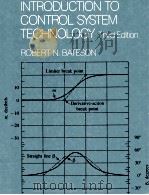
- INTRODUCTION TO CONTROL SYSTEM TECHNOLOGY THIRD EDITION
- MERRILL PUBLISHING COMPANY
-
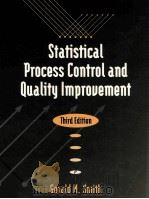
- STATISTICAL PROCESS CONTROL AND QUALITY IMPROVEMENT THIRD EDITION
- 1998 PRENTICE HALL
-

- INTRODUCTION TO CHEMISTRY THIRD EDITION
- 1979 JOHN WILEY & SONS
-
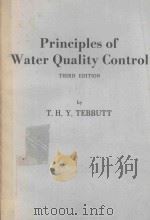
- PRINCIPLES OF WATER QUALITY CONTROL THIRD EDITION
- 1983 PERGAMON PRESS
-
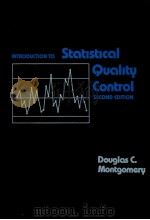
- Introduction to statistical quality control
- 1991 Wiley
-

- INTRODUCTION TO PSYCHOLOGY THIRD EDITION
- 1987 MCGRAW-HILL BOOK COMPANY
-
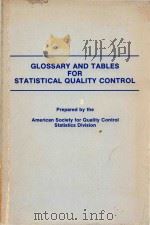
- Glossary and Tables for Statistical Quality Control Second Edition
- 1983 American Society for Quality Control
-
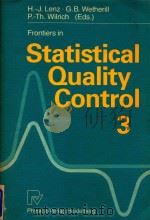
- Frontiers in statistical quality control 3
- 1987 Physica-Verlag
-
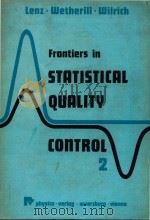
- Frontiers in statistical quality control 2
- 1984 Physica-Verlag
-
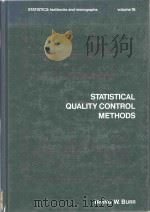
- Statistical quality control methods
- 1976 M. Dekker
-
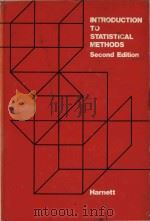
- Introduction to statistical methods Second Edition
- 1975 Addison-Wesley Pub.Co.
-
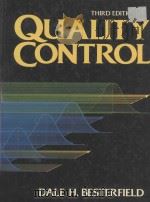
- QUALITY CONTROL THIRD EDITION
- 1990 PRENTICE HALL
提示:百度云已更名为百度网盘(百度盘),天翼云盘、微盘下载地址……暂未提供。➥ PDF文字可复制化或转WORD

